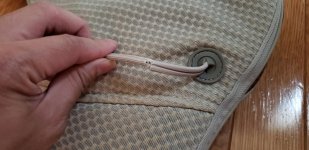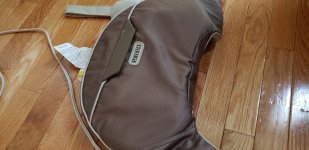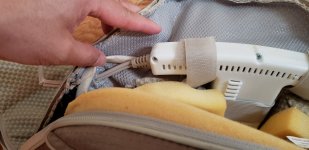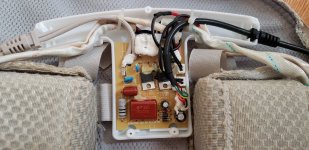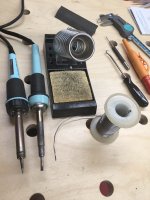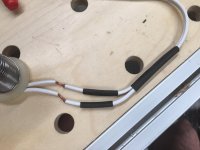Jiggy Joiner said:
If this type of repair isn’t inline with your area code, you could use a plug type connection, I didn’t suggest this originally because looking at the massager, and how close the cut is to it, a plug may impair comfort?
I'm not sure if there is any code or regulations regarding an appliance cord like this. You're exactly right about the proximity of the cut in the wire relative to the massager itself.
Bob D. said:
Is it possible to access the end of the power cord inside the device. If so since the damage is so close to the end maybe just elect to lose those couple inches in the overall cord length and make the repair internal. That way no splices to worry about and nothing visible on the exterior to indicate it was ever repaired.
Without being able to see the termination of the power cord internally it's difficult to advise if this type repair is even possible, but it may be worth considering if it is possible to gain access to inside the device without damaging it.
I cut the stitch that held the zipper closed. This is what's inside.
[attachimg=1]
We still can't see the termination points unless I open up the plastic housing. The housing just appears to be closed with screws. I wonder if I should investigate further and open up the housing. I am a little worried that the more I disassemble, the more likely I might not be able to put it back together again so that it works. Though, since the wire is cut it's not like the massager is currently working anyway.
I've had bad experiences in the past taking working items apart only to usually end up breaking them or something in the process. That's why my motto now is "if it ain't broke, don't fix it." I guess I should be ok in this case since it's already broken.
Bob D. said:
If you are not comfortable with soldering then this type repair might be something left to someone with more experience but it shouldn't cost much to have a small appliance repair shop fix it. You could invest in the tools and learn to solder but in the end it may be cheaper (and a better quality repair) to let someone else do it.
This seems like the ideal time to try to learn how to solder, but you're right this is something that would definitely be a better quality repair being done by someone who knows what he or she is doing. Also I don't know how many times, if ever I'll need to solder wires together in the future.
I guess I'll try to open up the plastic housing to see how the wires terminate. If it's something easy then I wouldn't need to buy anything to make the repair.
Doh - after typing everything up, I just realized that the wire doesn't exactly pass straight through directly into the plastic housing. It's got that joint/elbow thingie (not sure what you call it) that likely "slides/locks" into the housing and also allows the cord to flex a little. If I cut that section of wire out then I will no longer have that piece. Hmmmmmmmm. Back to the soldering option?

